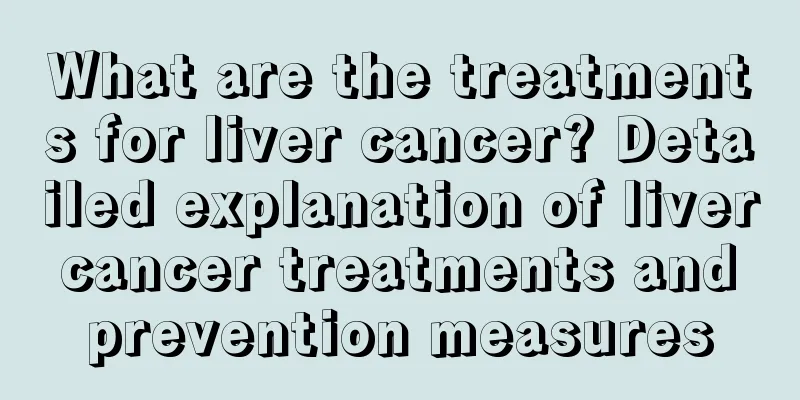Which types of people are most likely to develop prostate cancer

|
Diseases can bring a lot of troubles to people, whether in our lives or work. Different diseases prefer different groups of people, and prostate cancer also has a high-risk group. So who are its high-risk groups? Which types of people are prone to prostate cancer? These issues are getting more and more attention. The following content will help you solve these questions. Let's take a look. 1. Bald Man Bald men are twice as likely to develop prostate cancer as non-bald men. Studies have found that hair loss may be caused by testosterone levels during puberty, and the risk of prostate cancer in men may be related to testosterone levels in the body, which may appear as early as puberty. In addition, hormones are also related to baldness, which may explain the relationship between baldness and prostate cancer. Bald men are at higher risk of developing prostate cancer and heart disease, according to a major Harvard study that examined the relationship between hair loss and those who already have heart problems, including non-fatal heart attacks, angina or chest pain. Researchers believe that compared with men without hair loss, men who have begun to lose their hair have a 9% higher chance of developing these heart diseases, and this probability increases to 23% in bald men; if all the hair on the top of the head falls out, this probability increases to 36%. In this process, hormones once again become one of the culprits. According to scientists' speculation, the emergence of atherosclerosis and the formation of blood clots are related to hormones. 2. Men working the night shift According to researchers, from 1988 to 1997, nearly 16,000 men from 45 cities, towns and villages across Japan were surveyed to find out the relationship between working hours and the incidence of prostate cancer. Of all the men surveyed, 12,756 worked long-term day shifts, 1,184 worked long-term night shifts, and another 1,966 worked in shifts around the clock. In the follow-up study, 55 people were eventually diagnosed with prostate cancer, including 38 who worked the day shift, 6 who worked the night shift, and 11 who worked the day and night shift. The researchers also comprehensively studied the patients' family history of prostate cancer and differences in age and region. The final statistical results show that men who work day and night shifts are 3.5 times more likely to develop prostate cancer than men who work day shifts for a long time; while there is almost no difference in the risk of developing the disease between men who work night shifts for a long time and men who work day shifts. Researchers say that based on research so far, irregular shifts disrupt the body's biological clock and reduce the secretion of melatonin, which has the effect of inhibiting the proliferation of prostate cancer cells. This may explain why men with irregular working hours are more susceptible to prostate cancer. 3. "Womanizer" Some experts believe that in addition to diet and lifestyle habits, excessive visual and psychological sexual stimulation leads to excessive secretion of male hormones, which is a cause of prostate cancer. Sexual stimulation is related to rapid prostate growth. It is reported that prostate disease is closely related to lifestyle and diet. Studies have found that the cholesterol content in prostate glands with hyperplasia and inflammation is twice that of normal glands. Elevated cholesterol is a cause of prostate cancer. The cause of prostate cancer is also related to hormones, especially androgens, which may play an important role. "Excessive secretion of male hormones causes the imbalance of hormones in the body and leads to pathological changes. Hormone secretion is not only related to diet. External sexual stimulation can also lead to excessive secretion of male hormones." This statement comes from a survey on prostate diseases in Arab countries and European and American countries. "At that time, experts from various countries conducted surveys on diet and habits, and I proposed to include sexual stimulation in the list." The expert explained that sexual stimulation includes visual and psychological stimulation. "Seeing girls wearing less clothes, reading and watching pornographic novels and movies, most men will have physiological and psychological reactions, and their hormones will rise accordingly." 4. Obese men Obese men have twice the risk of prostate cancer compared with normal-weight men, a new study finds. Researchers say any effort to lose weight is likely to reduce the risk of prostate cancer, which is rising steadily among men in developed countries. The study found that although men who are simply overweight do not necessarily have an increased risk of prostate cancer, obesity can still increase the risk of prostate cancer by 2.5 times. The report published in the recently published British Journal of International Urology stated that in general, compared with BpH, body mass index (BMI) has no obvious relationship with prostate cancer, and obesity is a risk factor. BMI is the relative ratio of weight to height. BMI between 25 and 29.9 is defined as overweight, and over 30 is defined as obese. In this study, BMI over 25 was not associated with the risk of prostate cancer, but BMI over 30 was not. 5. Sexual indulgence A British survey found that men who have a promiscuous sex life when they are young may have a higher chance of developing prostate cancer in the future. The survey pointed out that if a person has many sexual partners around the age of 20, he has a high chance of being infected with human papillomavirus (HpV). Usually decades later, this infection may cause a series of gene mutations, leading to cancer. HPV has been confirmed to be closely related to cervical cancer in women and may also cause prostate cancer in men. Although this theory is new, once confirmed, it may explain why there are 27,000 new cases of prostate cancer and 10,000 deaths from the disease in men in the UK each year. Prostate cancer in men is now almost as big a killer as cervical cancer in women. 6. Men who sit too high A study from Dukc University Medical Center reported that after studying the human anatomy of 28 prostate cancer patients, it was found that these patients sat higher on chairs than healthy people of the same height. Further research has shown that those with high levels of the sex hormone testosterone increase their "sitting height" faster during development than those with normal testosterone levels. High testosterone levels can induce subtle changes in prostate cells, stimulating the growth of cancer cells, leading to the occurrence of prostate cancer in adulthood. The above is the introduction to the high-risk population for prostate cancer, and I hope it will attract everyone's attention. If you are one of them, please always pay attention to your physical changes, check in time, and seek treatment as soon as possible to avoid unnecessary troubles. |
<<: Men should be alert to prostate cancer if they have these abnormalities
>>: What are the symptoms of prostate cancer
Recommend
Apply ointment to cracked skin
Cracked skin is a very common condition, which is...
How to fix a mattress that is too soft
Many young friends who do not have much life expe...
Sequelae of convulsion
Because children's body resistance is relativ...
What is swine streptococcal disease
Streptococcus suis is a zoonotic disease caused b...
The serum leukocyte-to-blood ratio is low
The serum white blood cell ratio is generally at ...
How to detect liver cancer early? 7 clinical methods for diagnosing liver cancer
Current clinical diagnosis methods for liver canc...
Symptoms of triple-negative breast cancer
What are the characteristics of triple-negative b...
Is it necessary to have morning urine for routine urine test
When doing a routine urine test, morning urine is...
What are the treatment options for polycystic ovary?
If a female friend has problems such as infrequen...
What is the use of fitness
The pace of life is getting faster and faster, an...
What are the common preventive measures for lung cancer? Introduction to 5 effective methods to prevent lung cancer
Many people are currently troubled by lung cancer...
What are the symptoms of Sheehan's syndrome
The symptoms of Sheehan's syndrome are very m...
How to care for bleached and dyed hair
Nowadays, more and more people are dyeing their h...
What's wrong with diarrhea without abdominal pain
Diarrhea, which is commonly known as loose stools...
What to do with the sequelae of metatarsal fracture
In life, we often suffer fractures due to some ac...









